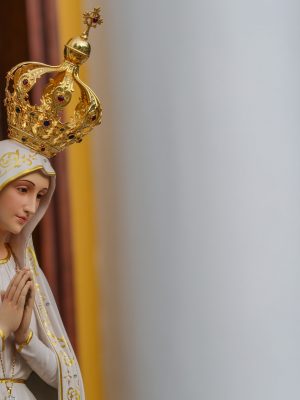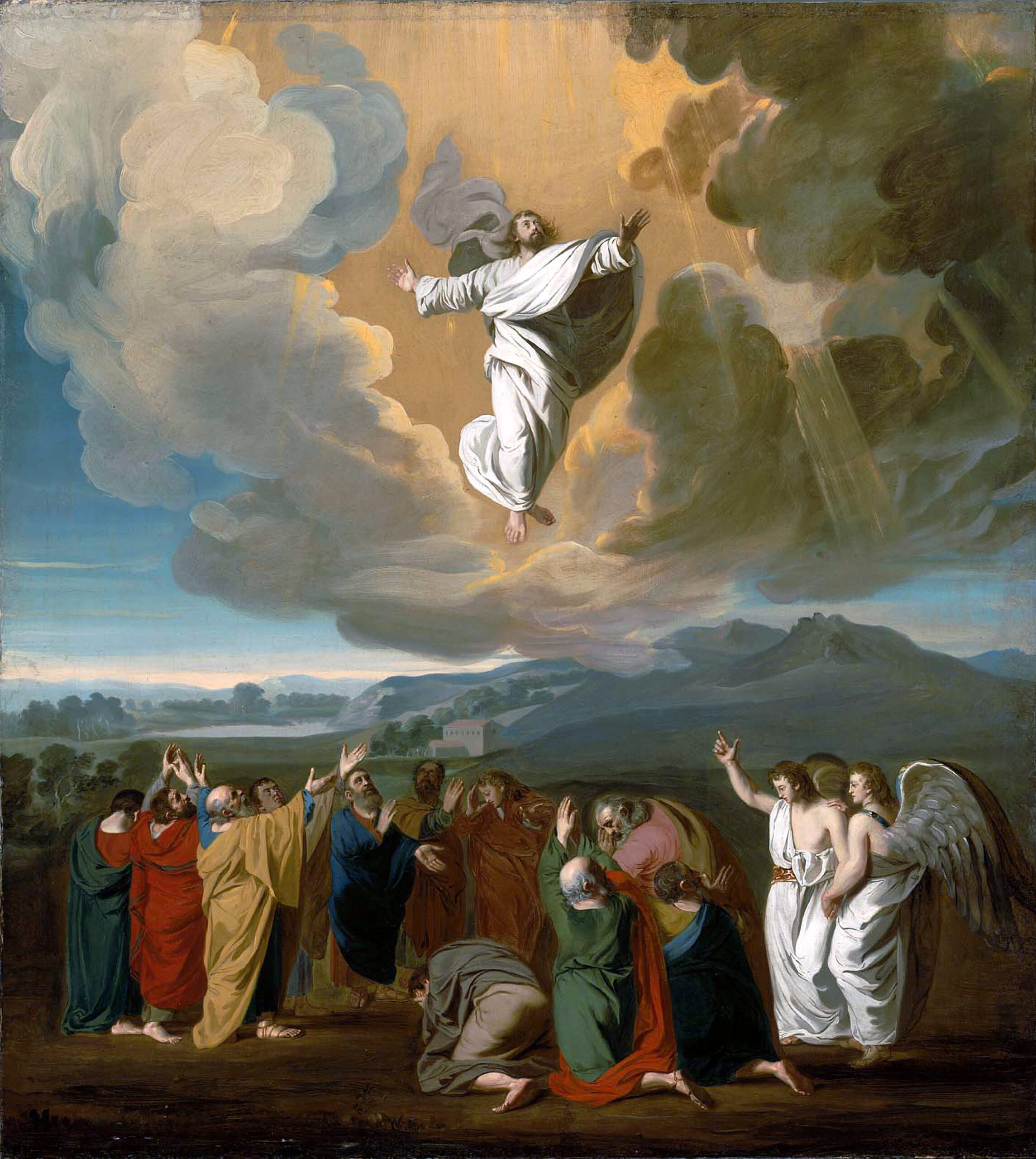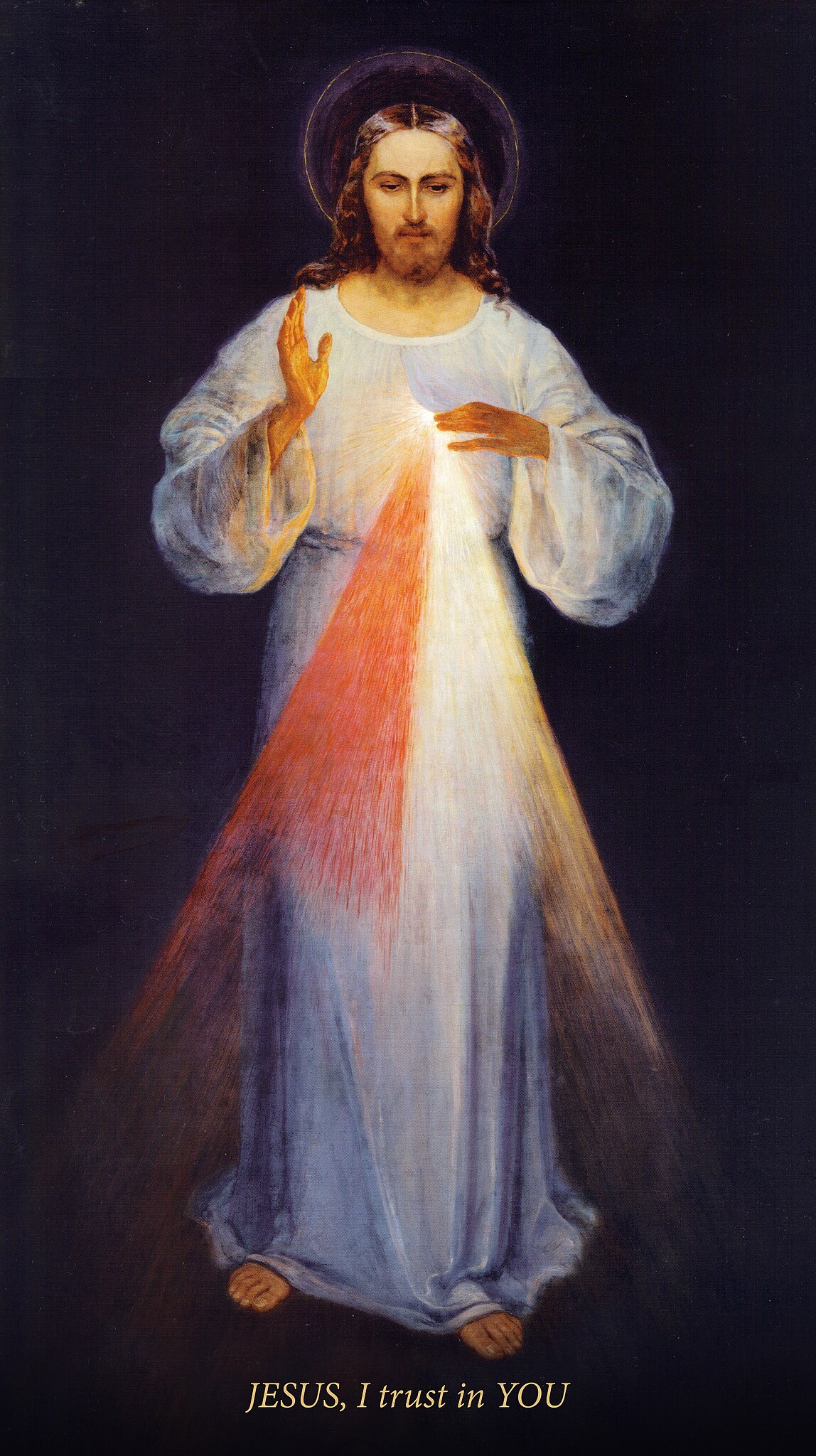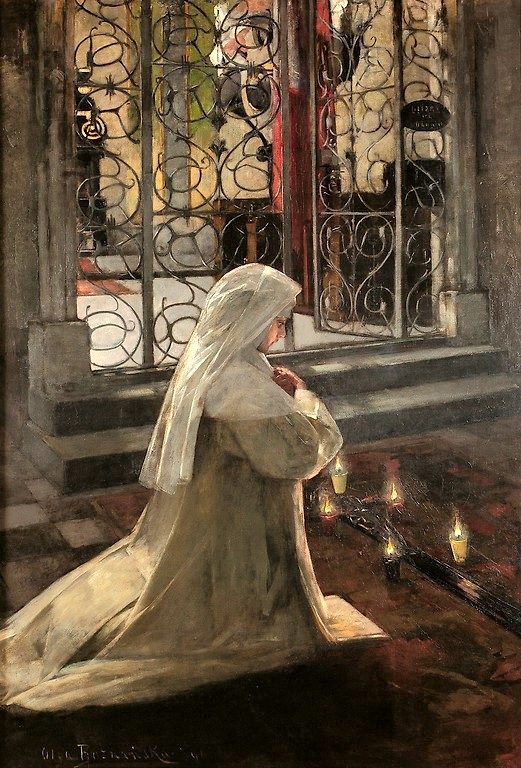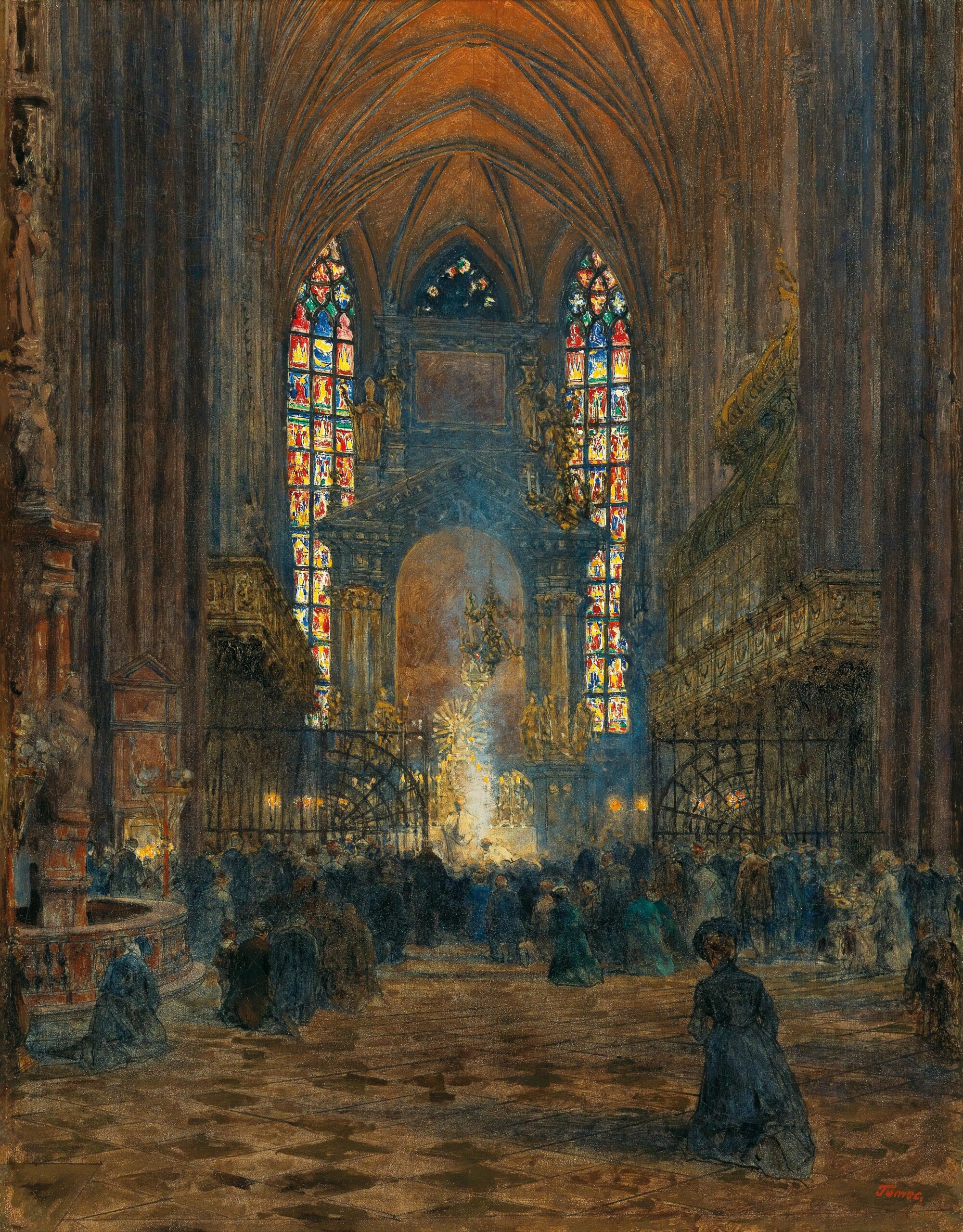On this Friday, March 25, 2022, the Feast of the Annunciation, Pope Francis will be consecrating Russia and Ukraine to the Immaculate Heart of the Blessed Mother in a ceremony at St. Peter’s Basilica. This is a big deal. It’s a big deal to the world. But consecration is also a big deal to each of us and our families. Let’s consider both.
As to why Pope Francis’ consecration is a big deal, we need to step back a bit, to the date of March 25, 1984 and John Paul II, and well before that, to a series of dates back in 1917 and the Blessed Mother at Fatima, Portugal.
As to the first of those dates, on March 25, 1984, Pope John Paul II set out to accomplish what Our Lady of Fatima had requested decades earlier. He looked to consecrate communist Russia to her Immaculate Heart. There had been other consecrations before, including two by Pope Pius XII. It was believed, however, that these were not sufficient in keeping with the direct appeal of the Blessed Mother at Fatima. So, on that March 25, John Paul II endeavored to do it right.
Kneeling near an altar at St. Peter’s Square, the Holy Father declared:
“In entrusting to you, oh Mother, the world, all individuals and peoples, we also entrust to you this very consecration of the world, placing it in your motherly Heart.”
With that, John Paul II hoped and prayed that he had done what the Blessed Mother had asked for decades earlier beginning with three little children in the tiny village of Fatima.
Unfortunately, there has been controversy ever since, given that the Holy Father made no direct reference to Russia. He did, however, use words like “all,” i.e., all of the peoples and individuals of the “world.” Surely that covered Russia. John Paul II felt confident that his language—and most certainly his intention—covered Russia. He even had his secretary of state, Cardinal Tarcisio Bertone, seek out at Sister Lucia, the last of the remaining Fatima children. She affirmed to Bertone, “The Act of Entrustment was entirely in accord with what the Blessed Mother had asked for.”
Nonetheless, many have remained unconvinced. And in their defense, the recent violent invasion of the Ukraine by Vladimir Putin, a former KGB agent, and his Russian troops, threatening to ignite nothing short of World War III, has many Catholics thinking that perhaps John Paul II’s consecration was not valid. After all, it certainly appears that Russia has hardly become peaceful.
Thus, what’s controversial about what Francis is doing is that it seems to confirm in the minds of some that Russia was never properly consecrated. Personally, I do not know. Only God knows. Perhaps either way, Francis must be thinking that doing this special consecration of Russia and Ukraine right now can’t hurt, whether covering all the bases of Fatima or simply as a spiritually prudent thing for a pope to do.
Generally speaking, we see here an underlying problem, namely: the not-so-simple question of how to properly do a consecration, whether for a country or individuals. In the case of Russia, Eric Sammons writes at Crisis Magazine:
“What might seem like a simple request has turned into a decades-long controversy. Over the years there have been various papal consecrations—one chart I saw listed eight different consecrations over the years….Now with Pope Francis’s announcement that he will consecrate Russia and Ukraine, new questions arise. For example, if the Vatican determined that the 1984 Consecration fulfilled Our Lady of Fatima’s request, why is there need for another Consecration? Beyond this are other questions that need to be addressed….Some have argued that every single bishop in the world must do the act of consecration in their Cathedral church at the same time as the pope and in the same manner. Others have said that it is sufficient for the pope to request their union…. Again, one thing is clear: Our Lady did not specify exactly how this union would be accomplished.”
As to the specific question of explicitly mentioning Russia itself in the literal words of the consecration, whether by Pope John Paul II in March 1984 or Pope Francis in March 2022, Sammons writes:
“Another question is whether the Consecration must be applied to Russia only. In the 1984 Consecration John Paul II did not mention Russia by name, likely for political reasons since this was the height of the Cold War and such a mention could have inflamed the situation. He did consecrate the world, which obviously includes Russia. But was that enough? Pope Francis is mentioning Russia by name, but he’s also including Ukraine. Does this make his Consecration contrary to Our Lady’s request?”
Since Sammons wrote this piece last week, Francis has widened the wording of the consecration to include all of “humanity” in addition to Russia and Ukraine. Here is the text:
“Therefore, Mother of God and our Mother, to your Immaculate Heart we solemnly entrust and consecrate ourselves, the Church and all humanity, especially Russia and Ukraine.”
We see here a myriad of questions, and for good reason. Above all, there is no established recipe for consecrating a country. A recent piece by Wendell Hull at Crisis states:
“There is no rubric for consecrating a country, let alone desacralizing it…. A number of countries have been consecrated in the past. These were done a variety of ways for different reasons. Twenty-four countries together were consecrated only two years ago to the Sacred Heart and Immaculate Heart in response to Covid. It is debatable what effect it had on them.”
But let’s take this beyond the literal confines of a specific country. What about the act of consecrating in general, for individual persons as well as entire nations? Hull notes:
“Consecration is the setting aside of a thing from a common and profane use to a sacred one, dedicating it or a person to the service and worship of God by prayers, rites, and ceremonies. The Church has rites and laws concerning the consecration of certain things. She consecrates bishops, church buildings, altars, altar stones, patens, and chalices. The intended effect of consecration is to bring graces to the thing or person so consecrated.”
Again, it’s not a simple question.
Recently, a priest gave a nice homily at my parish on the Feast Day of the Holy Family. He spoke of consecrating one’s family to the Holy Family. I asked him after Mass, “Great homily, but what’s the best way to do a consecration?” He laughed and said, “Great question!”
I was especially moved to do some sort of act of consecration for the family after reading Conor Gallagher’s recent excellent book on Parenting for Eternity. Conor firmly convinced me of the need for further spiritual leadership of my family. Consecrating my family to the Holy Family seemed another firm step in that spiritual direction. If you’re a mom or a dad, this is the kind of thing you probably ought to be doing. (See my interview with Conor here.)
And ironically, Francis is doing this with Russia and Ukraine around the time of the Feast Day of St. Joseph. There’s now a popular movement of consecration to St. Joseph, which Father Donald Calloway has been leading.
A colleague of Father Calloway is Father Michael Gaitley, who has led a popular of Marian consecration. Like Calloway, he did a book on the subject, 33 Days to Morning Glory (among several other books on consecration he has done). I read it, though honestly, I didn’t feel fully comfortable with the prayers of consecration offered. I took the liberty of borrowing some of Gaitley’s words and crafting my own prayer, of which I likewise did not feel entirely comfortable. Was I doing the consecration right?
I can, however, offer some guidance. The excellent Fathers of Mercy, the home of the terrific Fr. Wade Menezes, has spiritual direction for how to do a consecration to the sacred heart. There are also online sources with various acts by saints (click here and here, for example).
Of course, one would think that the Almighty would be supportive of any act of consecration that involves a sincere, devout, humble, penitent believer dropping to his or her knees and from the depths of heart and soul offering a carefully conceived prayer of consecration, whether self-composed or borrowed from a priest or saint who has done due diligence on this subject.
So, I have no magic formula, but maybe I can offer this timely advice during this week of Francis’ act of consecration with Russia and Ukraine: Again, that consecration is a big deal. When the pope performs it, join him with your prayers for in Russia and Ukraine. After that, don’t hesitate to do further acts of consecration for yourself and your family
It’s what we need for our families and our world.


